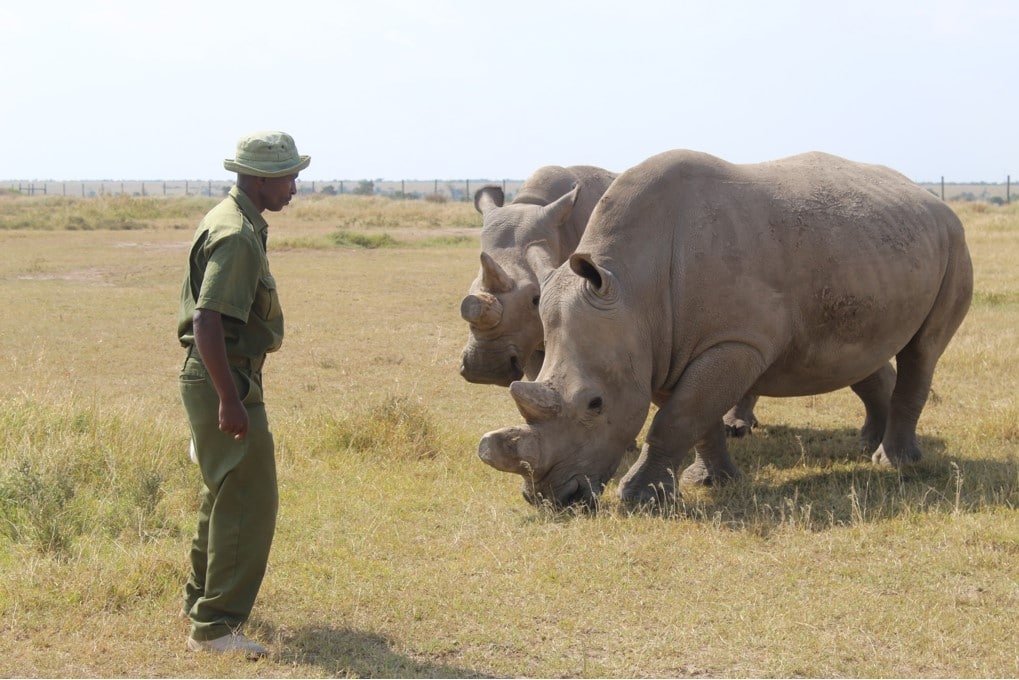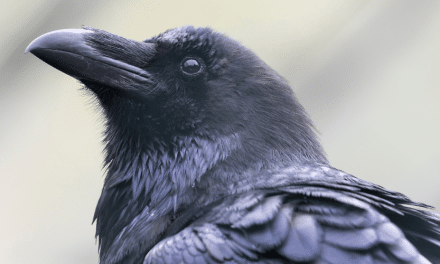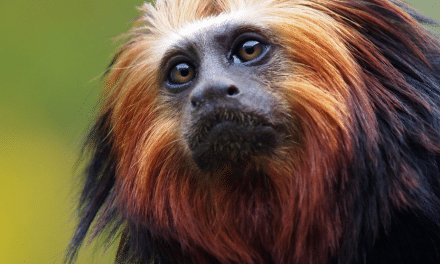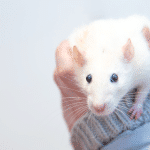By Hollie Bates, caseworker at Freedom Law Clinic
At Ol Pejeta conservancy in Kenya’s Laikipia region, four hours north of Nairobi, the last two northern white rhinos live under 24-hour protection from armed guards. Every day, Zacharia Mutai wakes up at 6am and starts his routine of caring for the two female rhinos, Najin and Fatu, who are mother and daughter. The bond between rhinos and caregiver is striking; it is obvious that Zach and the team at Ol Pejeta will protect these animals at all costs.
Declared functionally extinct in March 2018 after the death of Sudan, the last male, this species of white rhino tried to forestall full extinction with these two protected females and an audacious plan. This plan, led by a team of scientists, vets, and conservationists at BioRescue, seeks to use in vitro fertilisation and southern white rhino surrogates.1
Ol Pejeta conservancy aims to conserve wildlife, whilst ensuring that communities in the immediate regions reap the benefits of conservation, through agriculture, education, and community enterprise initiatives. With the help of a specially trained K9 anti-poaching unit and a consortium of dedicated armed rangers, Ol Pejeta ensures that all 90,000 acres of its conservancy — which also contains the largest black rhino sanctuary in East Africa — is protected every single day.
Sadly, conservancies like Ol Pejeta have been established out of necessity, as the numbers of rhinos across species have dwindled significantly due to poaching and loss of habitat. From the 1970s to the late 1980s, Kenya saw its black rhino population fall from 20,000 to fewer than 400 as a result of heavy poaching. Fuelled by a relentless demand from Asian countries, led by China and Vietnam, rhino horn can fetch up to $60,000 per kilogram, for use in traditional medicines as well as serving as a status symbol for the wealthy.
In response to rapidly dwindling wildlife figures across the globe, numerous international treaties were introduced to oversee protection and conserve species including rhinos. The 1968 Organisation of African Unity Convention on the Conservation of Nature and Natural Resources, to which Kenya was an early joining party, represented the international legal foundation of Africa’s own post-independence commitment to the conservation of species and the maintenance of protected areas. In 1975, CITES (Convention on International Trade in Endangered Species of Wild Fauna and Flora) came into effect to address the overexploitation of vulnerable species and regulate international trade in species under threat. All five species of rhino are covered under Appendix I, which includes species that are in danger of extinction because of international trade. In 1977, the UN enforced an international ban on rhino horn trade in order to prevent the seemingly inevitable extinction of the species. After the introduction of this ban, a decrease in poaching activity was reported, but was later determined to be a result of increased private ownership and converting national parks into protected areas rather than a change in attitude towards rhino horn.
Although a decrease in poaching incidents should in theory be celebrated, the increase in private ownership allowed for trophy hunting on a large scale, making protection of the species even more challenging. Protected areas are a vital tool in conservation but pose their own set of problems, such as rhinos being easier to locate and the added potential for internal corruption that comes with the management of such areas.2
Although conventions such as CITES and the CBD (Convention on Biological Diversity 1992) are crucial instruments in protecting endangered species, it remains the responsibility of the parties to the conventions to implement them in their domestic legislation, with the “real power of wildlife law lying within domestic law”3 as the primary mechanism for enforcement. After the introduction of CITES, Kenya legislated the Wildlife (Conservation and Management) Act 1976, and with it came the establishment of the Kenya Wildlife Service. However, the Act failed to provide adequate punishments for poaching and neglected to address issues concerning conservation management. Since its introduction, rhino populations fell by 95% and the Act was eventually repealed.
In 2013, a revised WCMA (Wildlife Conservation and Management Act 2013) was introduced to improve the protection, management, and sustainable use of Kenya’s wildlife resources, and now stands as the main law governing Kenyan wildlife conservation and management. It addresses “the perennial challenge of poaching and wildlife habitat destruction…with this law setting out stricter fines and punishments for offenders.”4 Almost immediately after its introduction, a Kenyan court passed down a record sentence of 7 years in prison or a 20 million shilling fine to a Chinese ivory smuggler, for possession of a tusk weighing 3.4 kilograms. Although this Act was a significant improvement on previous legislation, Ol Pejeta’s head of conservation Samuel Mutisya believes that important parts of the Act such as the human-wildlife compensation scheme have in practice not seen the light of day.5 Despite some shortcomings, Kenya’s Wildlife Act is the strongest in Africa and the country has recorded no rhinos poached in over a year.
A debate continues as to whether rhino horn trade should be legalised in an effort to control poaching numbers, but 2016 and 2019 CITES votes both rejected lifting the ban. Without international laws in place, the situation today would surely look much more dire. That said, implementation at national level is where it really makes a difference, and what is happening at Ol Pejeta is a microcosm of what needs to happen all over Kenya and other rhino states, with community awareness, education programmes, and financial opportunities for would-be poachers. Although the BioRescue program has recently announced that they are officially retiring Najin from the breeding program for her own health (and that neither Najin nor Fatu are able to carry pregnancies to term), their work continues with southern white rhino surrogates. Today, the number of rhinos in Kenya has increased to approximately 1200, with most living in protected areas. Two northern white rhinos remain on the planet, Najin and Fatu, and their DNA is worth more than all the stockpiled ivory in the world.

1 Northern and Southern white rhinos are two genetically different subspecies of white rhino. Whilst Najin and Fatu represent the last two northern white rhinos, there are approximately 18,000 southern white rhinos and they are classified as Near Threatened.
2 N Leader-Williams ‘Regulation and protection: successes and failures in rhinoceros conservation’ in Sara Oldfield, The Trade in Wildlife: Regulation for Conservation (2014, Routledge) 89-99.
3 Wandersforde-Smith, G. 2016, ‘Looking for law in all the wrong places? Dying elephants, evolving treaties, and empty threats,’ Journal of international wildlife law & policy, vol. 19, no. 4, p.369.
4 Kenya gets a new wildlife law 2014, accessed 11th July 2021, <https://wwf.panda.org/wwf_news/?216350/Kenya-finally-gets-a-new-wildlife-law>
5 Mutisya, S. Interview by Hollie Bates. 7th July 2021


















